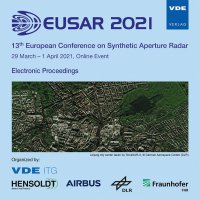Permafrost Thawing and Freezing Process Observed by TerraSAR-X Interferometry in the Northern Qinghai-Tibet Plateau
Konferenz: EUSAR 2021 - 13th European Conference on Synthetic Aperture Radar
29.03.2021 - 01.04.2021 in online
Tagungsband: EUSAR 2021
Seiten: 4Sprache: EnglischTyp: PDF
Autoren:
Wang, Chao; Zhang, Hong; Wang, Jing (Key Laboratory of Digital Earth Science, Aerospace Information Research Institute, Chinese Academy of Sciences, Beijing, China & University of Chinese Academy of Sciences, Beijing, China)
Tang, Yixian (Key Laboratory of Digital Earth Science, Aerospace information Research Institute, Chinese Academy of Sciences, Beijing, China)
Zhang, Zhengjia (Faculty of Information Engineering, China University of Geosciences, Wuhan, China)
Inhalt:
Seasonal subsidence and uplift is a key indicator of permafrost degradation due to ongoing climate warming. In this study, the new small baseline subset (NSBAS) technique based on a piecewise deformation model is used to retrieve the amplitude of seasonal deformation in Beiluhe area. This model includes the seasonally varying components (subsidence/uplift), as well as linear deformation rate. 9 scenes of TerraSAR-X data acquired between 2018/12/15 and 2019/10/08 were processed using this NSBAS algorithm. It is found that the seasonal deformation ranges from -60 to 20mm, and the linear deformation rate ranges from -24 to 6mm/yr in the study area. The period of the freeze-thaw cycles of different landscapes are different in Beiluhe area. The floodplain area and the barren area begin to thaw from the end of April to the beginning of May, the meadow area and alpine desert area begin to thaw in the middle of May, and the seasonal thaw subsidence of the study area reaches the maximum at the end of September. The results shows the feasibility of TerraSAR-X data for thawing and freezing process observation in permafrost regions.


